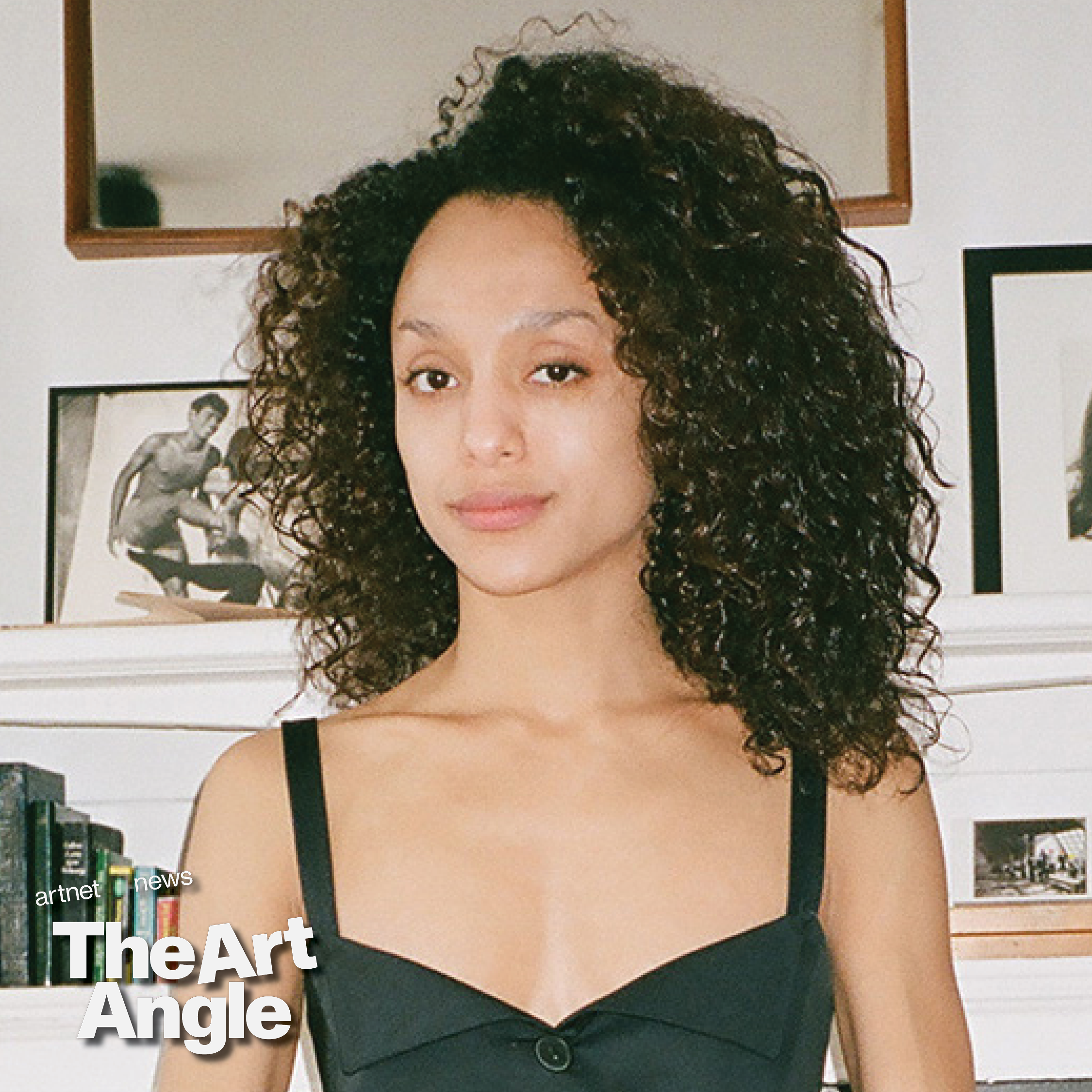
Welcome to Shattering the Glass Ceiling, a podcast from the team at the Art Angle where we speak to boundary-breaking women in the art world and beyond about how art has shaped their lives and careers.
In the third episode of the Art Angle’s podcast miniseries “Shattering the Glass Ceiling,” Artnet News’s London editor Naomi Rea spoke to curator and author Legacy Russell. Russell is currently serving as the associate curator of exhibitions at the Studio Museum in Harlem and is the award-winning author of Glitch Feminism: A Manifesto (2020), which explores how digital tools have created space to escape the limitations society places on our bodies. Her second book, BLACK MEME is forthcoming, and will also be published by Verso.
Below, read an excerpt of the conversation.
Can you set the scene a little bit and tell us about where you’re from and how you first fell in love with art?
I grew up in the East Village, born and raised on St. Marks. My father was a photographer who was born and raised in Harlem, and my mom was from Hawaii. They met in the ’70s and, being creative people, they were both deeply interconnected with artists in the community.
Growing up as a teenager I worked at B Bar and Grill, and I was a hostess at Beige where there were legendary gay dance parties on Tuesday nights on the Bowery. That was a special time and those experiences were formative because I got a chance to meet amazing performers and art writers, and be around people doing exciting things. It really opened my eyes to the downtown New York nightlife, club, and performance scene. It was in those spaces I began to get a sense of what I wanted to pursue in my own career and practice and curiosities—I was definitely a nerdy theater and poetry kid, and all of those things pushed me further in understanding the intersection between art and life and performance, and through a feminist lens.
How did you make the leap to finding your own career path?
I did a smattering of internships and gigs when I was quite young, and I made a rule for myself not to work for free, which is a challenging thing in the art world. I did not come from money and I had some great mentors who gave me advice early on to really hold that line and establish value for my work.
I went to Macalester College in Minnesota and totally froze my butt off, but during the period between my junior and senior years I got a fellowship at the Metropolitan Museum of Art and that brought me back to New York. I worked with Lisa Messinger at the time who was curator of 19th century, modern and contemporary art, and Donna Williams Sutton, who was working with audience development. So having a fellowship that stood at the intersection of those two things showed me different sides of what it means to exist within an institutional space.
How did you receive that experience?
On the one hand it was shaping the question of audience and thinking about how to engage different types of participation and presence inside of spaces that are assumed to be democratic and open to everyone—but of course that’s not always the case. And on the other side, working with Lisa who was handling archives and thinking deeply about the ways in which the material of an artist’s life could be cared for, and what the role of institutions is in making that care possible. Those were my first steps inside institutional spaces, and from that point forward I was very much someone who spent time deeply enamored with, and simultaneously wrestling with, museum spaces.
I went on to work at the Whitney and the Brooklyn Museum. But it’s been an ongoing period of time asking big questions about the museum space.
Today you have a breadth of experience from curating exhibitions and projects at a range of institutions including the Met, the Whitney, the Institute of Contemporary Arts in London, and, of course, the Studio Museum, where you are now. And, as a writer, you have also contributed to various publications. What have you learned about what makes a nurturing environment for creative thinking?
It’s a complicated question if only in thinking in terms of care, and I think those are ones that often operate inside institutional spaces, and so really when we talk about nurturing environs, it’s actually a key spoke in the wheel of decolonizing institutional space that actually the reassessment of care is a core component of what that can be. So when I think about what it means to be nurtured inside of institutional spaces, people that I have looked up to and loved dearly have set patterns for what that can be and what the possibilities are.
It’s really allowing the artists to shape the vision and participate in an equal playing field with the curators, the public programmers, the educators. What does that deep-tissue interstitial work really look like, and how to shape it in terms of a project or an exhibition or performance. For me, those questions have to be built into every part of the project.
Listen to the other episodes of Shattering the Glass Ceiling, a podcast miniseries from the Art Angle, below.
Art Collector and Media Executive Catherine Levene on Empathetic Leadership
Curator Lauren Haynes on Working to Forge a Fuller Story of American Art
Art Dealer Mariane Ibrahim on the Power of the Right Relationships